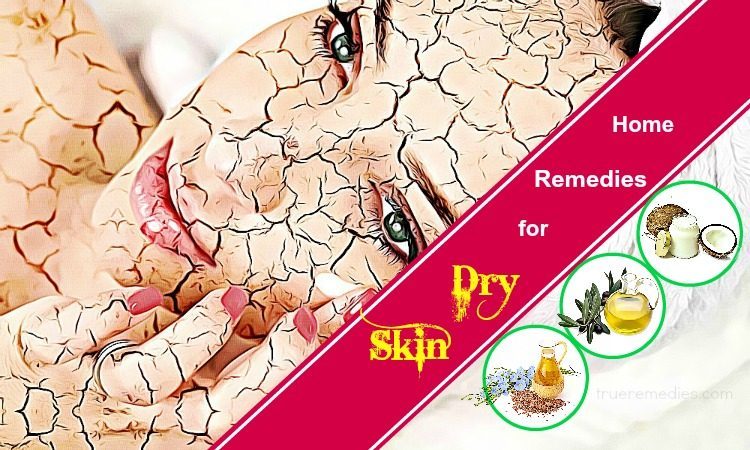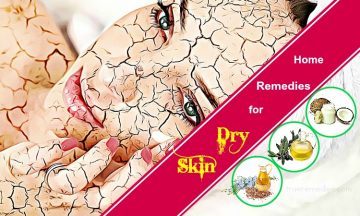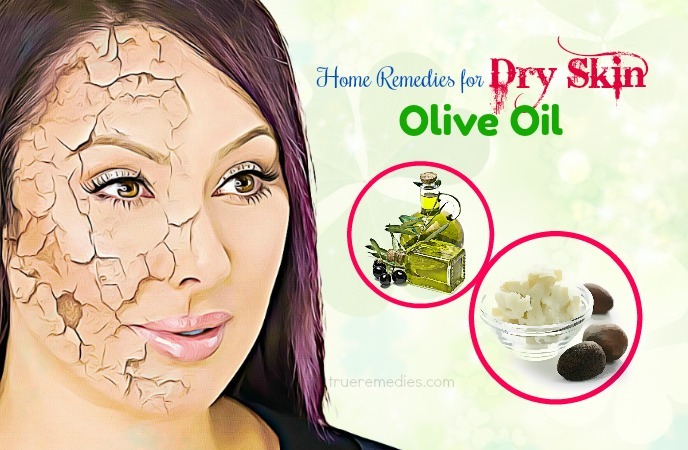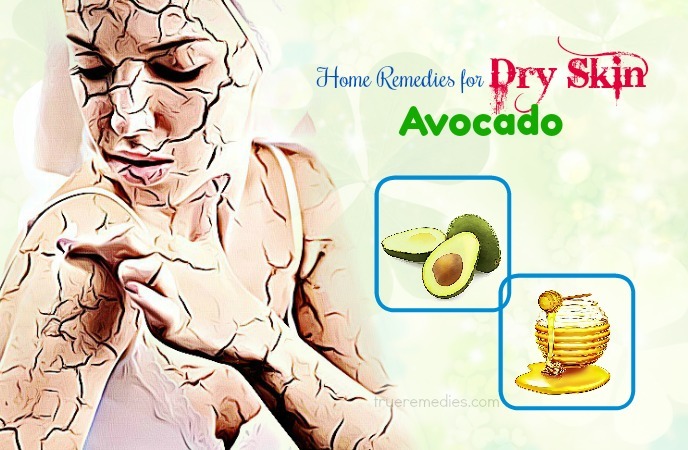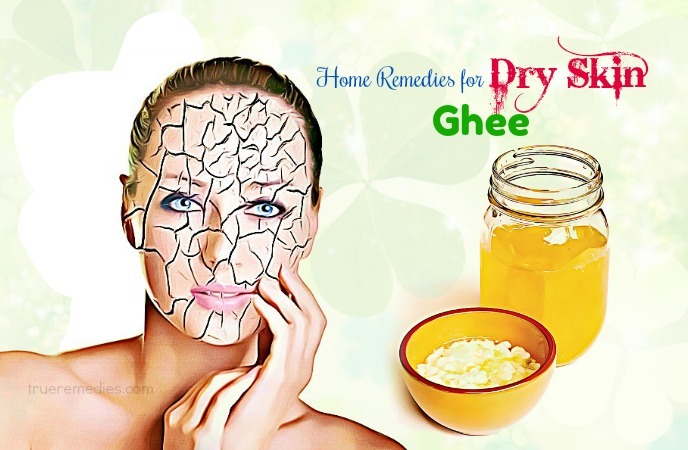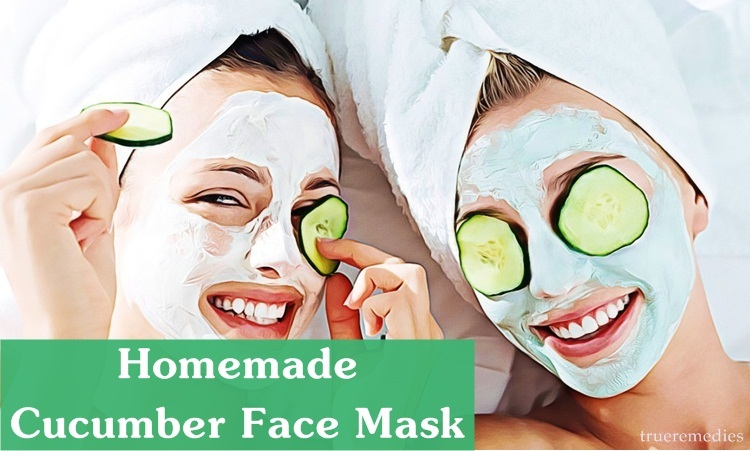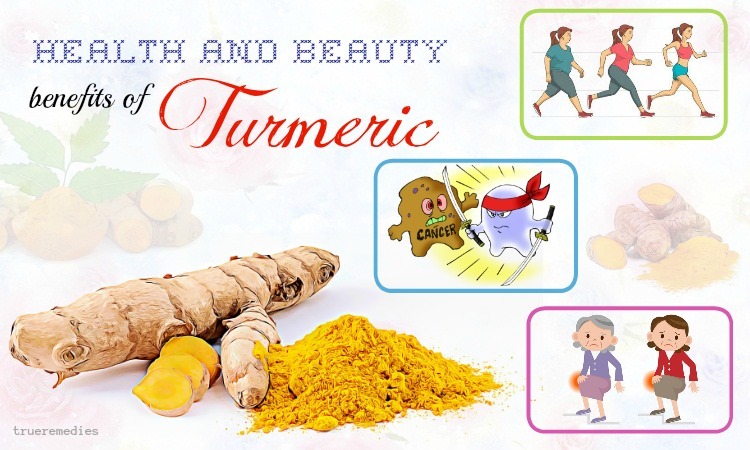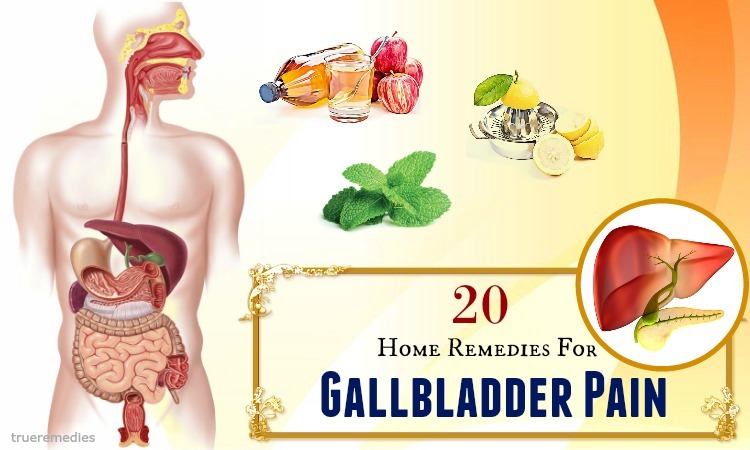updated: 06/14/2019
CONTENTS
Dry skin is a common issue that occurs at any age and due to many causes. You can use a moisturizer to help repair dry skin. In medical terms, dry skin is called xeroderma, which is not usually serious, but unsightly and uncomfortable. It may be a lifelong condition. The signs and symptoms of dry skin will depend on your health, your age, your living place, the amount of time spent outdoors, and the causes of the issue. Of course, having dry skin is not comfortable at all, that is why you are reading this article of Home Remedies for Dry Skin on Face and Body. Nonetheless, before getting to know the skin solution, you need to have a general understanding about this skin issue.
- 25 Natural Home Remedies For Dry Feet Skin
- 8 Best Minerals & Vitamins For Dry Skin On Face, Lips & Hands
- 21 Natural Home Remedies For Dry Face In Winter
What Is Dry Skin?
Oftentimes, dry skin does not represent a serious issue, but sometimes it could be hard to treat. Furthermore, it may be correlated to some other skin issues or accompanied by pathological conditions such as hypothyroidism, diabetes, malnutrition, and Sjögren syndrome.
Types Of Dry Skin
The exposure to dry weather conditions, certain chemicals, and hot water may result in dry skin. Furthermore, dry skin could result from underlying medical issues.
Dermatitis is a medical term of extremely dry skin. Some types of dermatitis are:
- Allergic contact
- Irritant contact
- Atopic
- Seborrheic
Contact dermatitis often develops when the skin reacts to something it contacts, leading to localized inflammation. The irritant contact dermatitis could happen when the skin is exposed to bleach or other irritating chemical agents. Also, this condition could develop when the skin is exposed to the substance that you are allergic to, like nickel.
TrueRemedies Partner Solutions

Need a Help from the Leading Expert Online, Available 24/7?
They’re all here and ready to answer your questions online or by phone. Keep asking questions until you get the answer you need.
On the other hand, seborrheic dermatitis happens when the skin manufactures lots of oil. It causes scaly and red skin rash. This kind of dermatitis is very common in infants.
The next type of dermatitis is atopic dermatitis, which is also known as eczema. This chronic skin issue causes dry, scaly skin patches, and it is common among young children.
Besides, other conditions such as type 2 diabetes and psoriasis could dry out the skin.
What Does It Look Like?
Dry skin involves skin areas which appear peeled, dehydrated, inflamed, and irritated. It feels scaly, rough, sometimes itchy and painful. Severe cases of dry skin might be featured by intense itchiness and redness. The skin tends to break or crack, leading to deep fissures which might bleed.
When the dry skin cracks, germs may get into via the skin. Once getting inside, these germs could lead to an infection. Sore, red spots on the skin might be an early signal of an infection.
What Are Causes Of Dry Skin?
Dry skin can happen for various reasons. You may have naturally dry skin, but even when your skin tends to be oily, you may still develop dry skin now and then.
Generally, anyone could suffer from dry skin. The skin becomes dry as it loses too much oil or water. Some people seem to be prone to dry skin. Common causes of dry skin are:
- The dry climate
- Age: Older adults are prone to develop dry skin. When people age, their skin pores produce less oil naturally, increasing the risk of dry skin.
- Medical history: You will be more likely to suffer from allergic contact dermatitis or eczema if your health history has these conditions or other allergic diseases.
- Season: Dry skin is much more common during the winter and fall months when the humidity levels are low. In summer months, the higher humidity levels can prevent your skin from drying out.
- Habits of bathing: Taking frequent baths or frequent use of hot water will increase your risk of having dry skin.
What Are Risk Factors?
Any person could develop dry skin. However, you might be prone to this condition if you:
- Are over 40 years old. This risk will increase with age – over 50% of older adults suffer from dry skin.
- Live in a cold, dry, or low-humidity climate.
- Have a job which you have to immerse your skin in water, like hairstyling and nursing.
- Frequently swim in chlorinated pools
When To See A Doctor?
Most cases of dry skin response positively to home remedies and lifestyle change. However, you should see your doctor if:
- Your skin does not get better although you try your best
- Dry skin is associated with redness
- Itching and dryness affect your sleeping
- Large skin areas are peeling or scaling
- You have infections or open skin pores from scratching
22 Best Home Remedies For Dry Skin Relief
1. Coconut Oil
Thanks to its emollient properties, coconut oil may fill the skin spaces between skin cells, thereby creating a smooth, soft skin surface[1]. It is the reason why the saturated fatty acids in coconut oil could hydrate and smooth your skin.
You can use this oil every day on every body part, including the area around your mouth and underneath your eyes. Using coconut oil for dry skin relief does not require too complicated preparation, so you do not need to mix it with anything. Coconut oil is gentle enough for daily use.
When rubbing coconut oil onto your skin, it will be absorbed slowly. Moreover, if you have psoriasis or eczema, this oil may calm these conditions, too[2]. It is really a win-win.
2. Olive Oil
Olive oil has vitamin E, a potent antioxidant that protects the human skin from environmental factors such as the wind and sun rays. Also, the healthy fats in olive oil may moisturize your skin and prevent it from drying out. Moreover, it helps seal the moisture in skin cells by creating a protective layer on the skin. Thanks to anti-aging properties of olive oil, it reduces wrinkles and fine lines, one of the common problems accompanied by dry skin. You can also use olive oil to promote the new generation of skin cells and remove damaged skin and dead skin cells, in addition to smoothing out the coarse and rough texture of dry skin[3].
You can use olive oil only for massage or combine it with some other ingredients, such as honey, sugar, salt, lemon juice, or shea butter.
Method 1: Olive oil and sugar
- Mix 2 tablespoons of olive oil with 1 tablespoon of sugar
- Apply the mixture to your skin and massage for 5-10 minutes
- Wait for 15 minutes before washing it off with tepid water
- Follow this routine twice or thrice per week
Method 2: Olive oil and lemon juice
Lemon juice has vitamin C that acts as a natural antioxidant to protect the skin from free radical damage. Besides, vitamin C may increase collagen and elastin formation that may hold the skin cells together. Using lemon juice also gives you smooth skin as it helps to remove dead and dry skin cells.
- Mix freshly squeezed lemon juice with olive oil at a ratio of 1:2
- Apply it all to your face
- Massage for 5-8 minutes and wait for 10 minutes or so
- Wash it off with tepid water
Note: Avoid going out under the sun after applying this recipe as it makes your skin more sensitive.
Method 3: Olive oil and shea butter
The vitamins and fatty acids in shea butter may help nourish and moisturize your dry skin. Besides, the palmitic, oleic, stearic, and linoleic acids in this ingredient may retain natural oils in your skin and alleviate wrinkle formation.
- Mix unrefined, raw shea butter with olive oil at a ratio of 2:1
- Apply the mixture to your skin, wait for 20 minutes, and wash it off with water
- Apply it 2-3 times per week
3. Flaxseed Oil
The rich content of omega-3 fatty acids in flaxseed oil may help to hydrate your skin, bring your flaky, dry skin the moisture from the inside[4]. Thus, you should take 1 teaspoon of flaxseed oil every day or take capsules of flaxseed oil if you want to get smooth skin from inside out. However, remember that your body will absorb the oil more easily in pure form.
4. Milk Cream
Milk cream contains lactic acid that acts as an exfoliant to remove dry, dead skin cells. Also, the soothing effects of milk cream may preserve the dedicate pH skin level and moisturize your skin naturally[5]. All of these benefits are thanks to the fat-soluble enzyme lipase and lactic acid in it.
Method 1:
- To use milk for dry skin, after washing the non-acne prone skin areas, massage milk cream on your face
- Use a wet cotton ball to wipe out and pat the skin dry
Method 2:
- Mix 4 tablespoons of gram flour with some milk cream
- Apply the paste to your face, legs, and hands
- Wait for 15 minutes and wash it thoroughly with warm water
- Do it once per day
You can also alternate milk cream with milk to get similar effects. Not only does milk moisturize your skin, but it also lightens your skin.
5. Honey
Honey is really worth trying if you are looking for simple but effective remedies for dry skin. It has potent antibacterial, healing, and probiotic properties, not to mention nourishing and hydrating effects[6]. This ingredient is beneficial for those with skin ailments such as eczema and flaky skin. Nonetheless, it is recommended using raw and unfiltered honey to take the most advantage from it. You should choose Manuka honey as it has the most potent antibacterial effects[7].
You combine honey with other ingredients to have a facial scrub to remove rough skin cells. Most face washes available in the market nowadays contain honey as the main constituent. You can make your own facial scrub by following these steps.
- Mix olive oil, brown sugar, honey, and fresh lemon juice together
- Whip them up to have a thick mask and apply a thin layer to your face
- Massage for 2-3 minutes slowly to remove dead skin cells and reveal bright skin.
- Rinse it off with warm water after 15 minutes
Or, you could simply rub honey on your body and wait for 10 minutes before rinsing it off. That way will help give you a well-moisturized skin.
6. Yogurt
Yogurt is very familiar with us as a food, but it is also used as a skin care ingredient. Being an excellent skin-hydrated agent, yogurt may soothe your itchy and dry skin thanks to its anti-inflammatory and antioxidant effects[8].
Besides, the lactic acid in yogurt will remove harmful bacteria or germs from your body, which may result in itching or dryness[9].
Method 1:
- Put some fresh yogurt onto your hands, legs, and face and start massaging for 2-3 minutes
- Leave it there for 10 minutes and take a shower
- Do this once per day
Method 2:
- Mix 3 tablespoons of blended or mashed papaya with ½ cup of yogurt
- Stir well and add several drops of lemon juice and honey to it
- Apply the mixture to your skin and wash it off with cold water after 10 minutes
- Do it once per week
7. Avocado
Maybe, among natural home remedies for dry skin, this is the most delicious and common one for all of us. Thanks to a high concentration of vitamin A, glutamine (an antioxidant), copper, and vitamin C, avocado may help ensure enough sebum production on your skin, stimulate collagen production, maintain the elasticity of your skin, and even out your skin tone[10].
Besides, the oleic acid, a monounsaturated fatty acid, in avocado has moisturizing properties while it also contains alpha-, beta-carotene, and lutein that may improve skin tone and protect the skin from premature aging. Moreover, this fruit possesses potent anti-inflammatory, minerals such as magnesium, iron, phosphorus, and zinc – all of which help alleviate the itchiness of the dry skin, meanwhile protecting skin from sun damage.
You can use avocado directly or mix it with other natural ingredients such as olive oil, honey, or yogurt.
Remember to wash your skin carefully with a mild cleanser along with warm water prior to using any natural avocado mask.
Method 1:
- Mash an avocado pulp into a good paste.
- Rub this paste on your skin, wait for 15 minutes, and wash it off with cold water
- Repeat this routine daily
Method 2:
- Mix ½ ripe avocado with ½ cup of honey
- Apply the mixture to your dry skin and wait for 15 minutes prior to rinsing it off
- Use it up to twice per week
In addition to the external methods above, you should also drink a glass of an avocado smoothie every day to boost your intake of healthy fats and keep your skin moisturized and hydrated.
8. Oatmeal
Oatmeal is good for the human skin for a lot of reasons, whether it is straight out-of-the-box or as an ingredient in cosmetic products. This hypoallergenic ingredient is suitable for even the most sensitive skin without reactions[11].
Using oatmeal will help creates a protective barrier to your skin and soothe and moisturize your skin naturally due to its anti-inflammatory and moisturizing properties. Besides, the texture of oatmeal is rather rough, making it a fantastic natural scrub.
Method 1: Oatmeal bath
- Take a cup of oats and grind it into a fine powder to have your colloidal oatmeal
- Add it to your bathtub and soak for 15 minutes or more
Method 2: Oatmeal mask
This mask will soothe and add moisture to your skin while providing an exfoliating effect. Although it is suitable for all skin types, dry skin seems to benefit the most from this solution.
- Grind 2 tablespoons of oats in a grinder
- Mix the powder with 2-3 tablespoons of hot water
- Wait for 5 minutes to let it cool down
- Apply it to your clean skin and massage in circular motions for 5 minutes
- Wash it off with cool water and use a soft towel to wipe it out
- Apply a moisturizer to your skin
Method 3: Oatmeal and banana
You can also mix oatmeal with a banana to have a mask which cannot only moisturize and hydrate your skin but also prevent it from dryness. That is because banana has excellent contents of potassium, B-complex vitamin, and vitamin E.
- Mix 2 tablespoons of oatmeal with a proper amount of water to create a thick paste
- Mash a ripe banana by using a fork and mix it with oatmeal
- Apply the mixture to your clean skin for 15 minutes
- Wash it off with cool water and repeat this routine 2-3 times a week.
Alternatively, you could also mix oatmeal with papaya, honey, lemon, aloe vera, sugar, or avocado to remove dry skin cells effectively.
Notes:
- The oatmeal may dry out rapidly and stick to your skin; so, you can splash water on the area and massage with your fingers to remove it.
- Avoid applying oatmeal packs to your eyelids or the areas around the eyes, as it could dry out that dedicate and soft skin.
- People with eczema should avoid this type of treatment
- People with celiac diseases might be allergic to oatmeal. So, do a small patch test prior to using it.
9. Almond Oil
In regard to natural dry skin removal, almond oil is worth-trying due to its excellent source of vitamin E. It is considered the best lubricator and emollient for dry, rough skin. Besides, thanks to the antioxidant effect, it is good for your skin in general[12]. This oil is non-greasy, so it may be easily absorbed into your skin.
- Take some pure almond oil to warm up
- Then, massage your skin with this solution and leave it there 30 minutes prior to having a bath
- After showering, apply a light moisturizer.
- Do this once per day
To get better results from almond oil, you can drink a glass of warm milk mixed with 1 teaspoon of almond oil prior to going to sleep. Repeat this habit nightly to have healthier skin and sound sleep as well.
Note: You should avoid these methods if you are allergic to almonds.
10. Aloe Vera
The clear gel extracted from aloe vera leaves has been used for many years in the treatment of different skin illnesses and wounds[13]. With antiseptic, soothing, and antifungal effects[14], aloe vera may fight off irritated, dry skin, soothe skin, reduce soreness and discomfort, and prevent the skin from flaking. This remedy may moisturize your complexion and protect it from any type of impurities. You can use aloe vera as a natural moisturizer, skin brightener, natural cleanser, or daily scrub.
- Cut a fresh aloe vera leaf to extract its gel
- Apply the gel to your skin and wait for 15 minutes
- Wash it off with warm water
- Do this twice per day
Note: The use of aloe vera gel externally for skin issues has not been associated with any secondary effects or contraindications. You should also consult your doctor prior to using it.
11. Besan/Gram Flour
Among natural home remedies for dry skin, besan seems to be little-known. Besan may hydrate your dry, rough skin because of the availability of a humectant that could prevent the water loss from the skin. Besan contains alkalizing properties, and it is traditionally used as a natural cleanser to maintain skin pH[15]. Combining besan with lime juice, milk, and honey will give you a great solution for not only smoothing out the skin but also brightening it at the same time. Lime has vitamin C that has the ability to fight blemishes[16]. Honey and milk have nourishing effects, which explains why this pack is a good tip to get soft and hydrated skin.
- Mix 2 tablespoons of gram flour/besan with 1 teaspoon of turmeric and 1 tablespoon of honey
- Then add the mixture to a half cup of milk, followed by 1 teaspoon of lime juice
- Apply the pack to your skin and wait till it dries out
- Wash it off and then with lukewarm water
- Do this routine daily for the best results
12. Mango
Thanks to the rich content of vitamin A with an ability of hydrating and moisturizing dry skin, mango may heal flaky, dry skin while rejuvenating it naturally. Moreover, according to a study carrying on hairless mice (that are exposed to UVB rays), mango extracts may inhibit wrinkle formation[17]. To have a treatment for dry skin using mango, you can add honey and olive oil for better results. Honey is known for nourishing properties and olive oil has moisturizing benefits, all of which are good for dry skin. Thus, it is an ideal mask for flaky, dry skin.
- Separate the pulp of a ripe mango from the skin and then make a mush from it by using a mixer
- Put 1 tablespoon of honey into this mush, followed by 3 teaspoons of olive oil
- Apply the mixture to your skin and wait for 30 minutes to wash it off
- Do this method 3-4 times per week to get glowing and moisturized skin
13. Ghee
If you are looking for convenient but effective home remedies for dry skin, then don’t skip ghee. This ingredient could be purchased in the pure form or made from butter. Ghee may activate sebum secretion and heal the dryness[18].
- Rub some pure ghee on your affected skin areas in circular, slow motions to let it be absorbed by your skin
- Wait for several hours before having a bath
- Do this daily for better results
14. Papaya
Papaya is ideal for dull skin[19]. Not only does it add brightness and clarity to your skin, but it also repairs your dry skin and add moisture to it.
Mix just 2 tablespoons of mashed papaya with 1 teaspoon of milk cream and 1 teaspoon of multani mitti (also known as Fuller’s Earth). Then, apply this mixture to your affected skin. Wash it off after about 15 minutes.
15. Glycerine
Glycerin may work wonders on both dry skin and chapped lips because it is a wonderful emollient and humectants[20].
- Mix 1 teaspoon of glycerin with 1 tablespoon of rose water to have a good mixture
- Apply the mixture to your dry skin patches
- Leave this solution there for several hours before rinsing it off
In case you feel it is too tacky, you could wash it off after about one hour.
Lifestyle Tips
If you are suffering from flaky, dry skin, then remember that following the same skin care all year round might not work well when the humidity reduces. Without a modification in your skincare, the dry air could trigger wrinkles and fine lines and make them noticeable. Dry skin could crack, itch, and even bleed. To get rid of dry skin, in addition to the mentioned-above home remedies, you should apply the tips below:
- Prevent showers and baths from making your dry skin worse. When your skin is dry, do not close the bathroom door, reduce the time of having a bath to 5-10 minutes, use warm water than hot one, wash with a fragrance-free, gentle cleanser, apply enough cleanser to eliminate the oil and dirt, and slather on the moisturizer instantly after drying out your skin.
- Use a good moisturizer. Creams, ointments, lotions work by trapping the available moisture in your complexion. Thus you should apply a moisturizer within several minutes of washing your hands and face or drying off after a bath or shower.
- Use a cream or ointment instead of a lotion. Creams and ointments are considered to be more effective and less irritating than lotions. Choose the products having jojoba oil or olive oil. Or, you can also choose shea butter. Other ingredients may also help soothe dry skin are urea, lactic acid, hyaluronic acid, glycerin, dimethicone, mineral oil, petrolatum, and lanolin.
- Just use unscented, gentle skin care products. Some specific skin care products may be too harsh for sensitive, dry skin. Do not use deodorant soaps or skin care products having alcohol, retinoids, fragrances, alpha-hydroxy acid (AHA) if you have dry skin[21]. This will help your skin retain its own natural oils.
- Wear gloves. The hands are usually the first part that we notice dry, rough skin. You can decrease raw, dry skin by wearing gloves, particularly before going outdoors in the winter and performing tasks which require you to get the hands wet or getting greases, chemicals, or other substances on the hands.
- Add moisture to your home air by using a humidifier.
- Shave smartly. Shaving could irritate your dry skin. When shaving unwanted hair, you are scraping off the natural oils. The best time to do it is after having a shower, in accordance with the American Academy of Dermatology. The hairs become softer and more pliable after having a bath, thereby making shaving much easier. Use a shaving gel or cream, then shave in the direction that the hair is developing to protect the skin. Warrant that your razor is sharp. The dull razor blade could lead to extra irritation. Thus, remember to change your razor blades usually. If you use a used blade, soak it in the rubbing alcohol to cleanse it.
- Protect your skin from sun rays. Sun damage is considered one of the major causes behind wrinkles, dry skin, and roughness. Prevent that damage by using a broad-spectrum SPF 30 sunscreen all year round and also dressing properly. In the cool weather, you should dress in layers to prevent overheating and perspiring too much. Both of them may irritate your skin. To prevent chapped, swollen, dry lips in winter, you should take advantage of a lip balm having SPF 15. In summer, you should wear loose, light, and long-sleeved shirts when being outdoors. Also, wear a 2-inch wide-brimmed hat to shade your ears, neck, and eyes as well.
In reality, dry skin is not a serious health issue, yet it could lead to serious complications, such as chronic eczema (red patches) or bleeding from fissures which have become deep adequate to disrupt the capillaries in the dermis. Besides, another possible complication is the secondary bacterial infection (pus, swelling, and redness) which might require antibiotics.
The above are natural home remedies for dry skin, which will help you get smooth skin without using harmful cosmetics. However, see a dermatologist if these home remedies do not work, or if your dry skin becomes very scaly or bleeding. We will write more about natural beauty tips in our Home Remedies page. Keep reading! For any contributing ideas about this post, feel free to drop your words at the comment box below!

